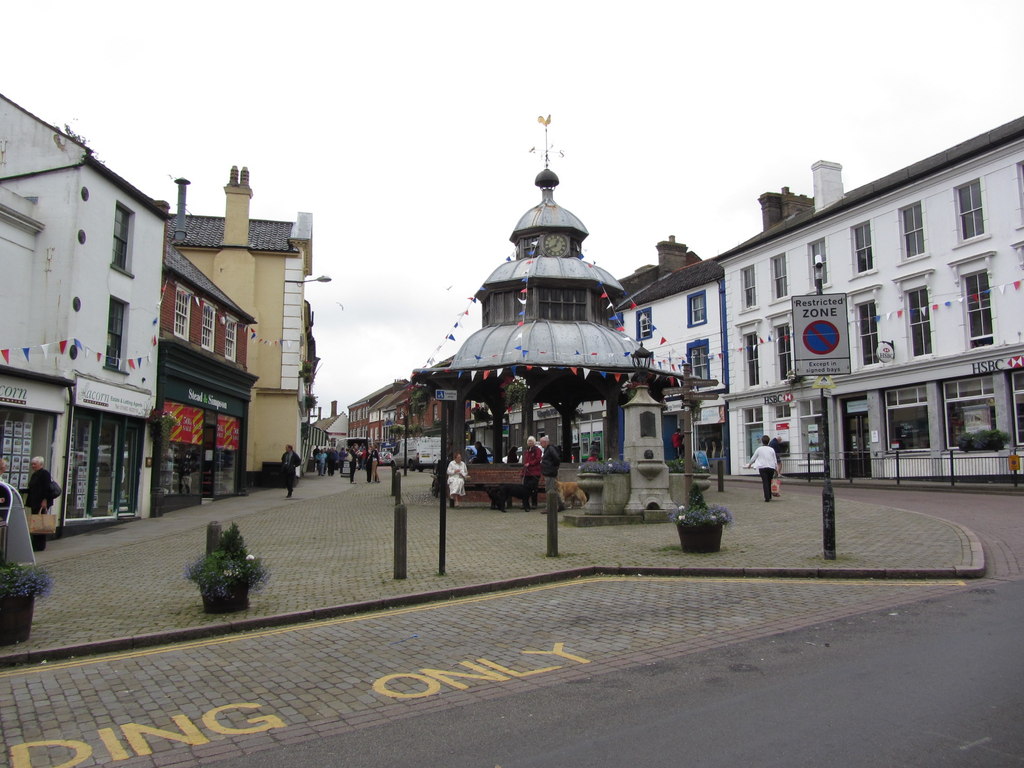|
Honing, Norfolk
Honing is a village and a civil parish in the English county of Norfolk. The village is north-northeast of Norwich, south east of Cromer and north-east of London. The village lies east of the town of North Walsham. The nearest railway station is at Worstead on the Bittern Line which runs between Cromer and Norwich. The nearest airport is Norwich International Airport. The village and parish of Honing with Crostwight had in the 2001 census, a population of 319, but this fell to 312 at the 2011 Census. For the purposes of local government, the village falls within the district of North Norfolk. Description Honing is a large parish in north-east of the county of Norfolk. Its northern boundary is with the civil parish of Witton whilst to the south is the parish of Dilham. West lies Worstead and on the eastern boundary is the parish of East Ruston. The disused North Walsham & Dilham Canal runs along the south-west boundary of the parish. There are several areas of comm ... [...More Info...] [...Related Items...] OR: [Wikipedia] [Google] [Baidu] |
North Norfolk
North Norfolk is a local government district in Norfolk, England. Its council is based in Cromer. The population at the 2011 Census was 101,149. History The district was formed on 1 April 1974, under the Local Government Act 1972. It was a merger of Cromer Urban District, North Walsham Urban District, Sheringham Urban District, Wells-next-the-Sea Urban District, Erpingham Rural District, Smallburgh Rural District, and Walsingham Rural District. The district was originally to be called Pastonacres, but changed its name by resolution of the council and permission of the Secretary of State for Environment before it formally came into existence on 1 April 1974. Politics Elections to the district council are held every four years, with all of the seats on the council up for election every fourth year. The council was run by a Conservative administration, the Conservative party having gained a majority of 8 seats at the 2011 elections, which they increased to 18 at the ... [...More Info...] [...Related Items...] OR: [Wikipedia] [Google] [Baidu] |
Weavers' Way
The Weavers' Way is a long-distance footpath in Norfolk, England. Much of the Weavers’ Way footpath follows the old trackbed of the Aylsham to Great Yarmouth railway line, which was operated by the Midland and Great Northern Joint Railway and was closed in 1959. Route The Weavers' Way runs from Cromer to Great Yarmouth. It passes through Hanworth, Aylsham, North Walsham, Worstead, Stalham, Potter Heigham, Thurne and Halvergate; it then crosses the marshes around Berney Arms and skirts the northern edge of Breydon Water where it shares the same route as the Wherryman's Way. on the LDWA website The name ''Weavers' Way'' comes from the cloth ind ... [...More Info...] [...Related Items...] OR: [Wikipedia] [Google] [Baidu] |
Domesday Book
Domesday Book () – the Middle English spelling of "Doomsday Book" – is a manuscript record of the "Great Survey" of much of England and parts of Wales completed in 1086 by order of King William I, known as William the Conqueror. The manuscript was originally known by the Latin name ''Liber de Wintonia'', meaning "Book of Winchester", where it was originally kept in the royal treasury. The '' Anglo-Saxon Chronicle'' states that in 1085 the king sent his agents to survey every shire in England, to list his holdings and dues owed to him. Written in Medieval Latin, it was highly abbreviated and included some vernacular native terms without Latin equivalents. The survey's main purpose was to record the annual value of every piece of landed property to its lord, and the resources in land, manpower, and livestock from which the value derived. The name "Domesday Book" came into use in the 12th century. Richard FitzNeal wrote in the '' Dialogus de Scaccario'' ( 1179) that the bo ... [...More Info...] [...Related Items...] OR: [Wikipedia] [Google] [Baidu] |
Neolithic
The Neolithic period, or New Stone Age, is an Old World archaeological period and the final division of the Stone Age. It saw the Neolithic Revolution, a wide-ranging set of developments that appear to have arisen independently in several parts of the world. This "Neolithic package" included the introduction of farming, domestication of animals, and change from a hunter-gatherer lifestyle to one of settlement. It began about 12,000 years ago when farming appeared in the Epipalaeolithic Near East, and later in other parts of the world. The Neolithic lasted in the Near East until the transitional period of the Chalcolithic (Copper Age) from about 6,500 years ago (4500 BC), marked by the development of metallurgy, leading up to the Bronze Age and Iron Age. In other places the Neolithic followed the Mesolithic (Middle Stone Age) and then lasted until later. In Ancient Egypt, the Neolithic lasted until the Protodynastic period, 3150 BC.Karin Sowada and Peter Grave. Egypt in ... [...More Info...] [...Related Items...] OR: [Wikipedia] [Google] [Baidu] |
Mesolithic
The Mesolithic (Greek: μέσος, ''mesos'' 'middle' + λίθος, ''lithos'' 'stone') or Middle Stone Age is the Old World archaeological period between the Upper Paleolithic and the Neolithic. The term Epipaleolithic is often used synonymously, especially for outside northern Europe, and for the corresponding period in the Levant and Caucasus. The Mesolithic has different time spans in different parts of Eurasia. It refers to the final period of hunter-gatherer cultures in Europe and Western Asia, between the end of the Last Glacial Maximum and the Neolithic Revolution. In Europe it spans roughly 15,000 to 5,000 BP; in Southwest Asia (the Epipalaeolithic Near East) roughly 20,000 to 10,000 BP. The term is less used of areas farther east, and not at all beyond Eurasia and North Africa. The type of culture associated with the Mesolithic varies between areas, but it is associated with a decline in the group hunting of large animals in favour of a broader hunt ... [...More Info...] [...Related Items...] OR: [Wikipedia] [Google] [Baidu] |
Medieval
In the history of Europe, the Middle Ages or medieval period lasted approximately from the late 5th to the late 15th centuries, similar to the post-classical period of global history. It began with the fall of the Western Roman Empire and transitioned into the Renaissance and the Age of Discovery. The Middle Ages is the middle period of the three traditional divisions of Western history: classical antiquity, the medieval period, and the modern period. The medieval period is itself subdivided into the Early, High, and Late Middle Ages. Population decline, counterurbanisation, the collapse of centralized authority, invasions, and mass migrations of tribes, which had begun in late antiquity, continued into the Early Middle Ages. The large-scale movements of the Migration Period, including various Germanic peoples, formed new kingdoms in what remained of the Western Roman Empire. In the 7th century, North Africa and the Middle East—most recently part of the Eastern Roman ... [...More Info...] [...Related Items...] OR: [Wikipedia] [Google] [Baidu] |
Old English
Old English (, ), or Anglo-Saxon, is the earliest recorded form of the English language, spoken in England and southern and eastern Scotland in the early Middle Ages In the history of Europe, the Middle Ages or medieval period lasted approximately from the late 5th to the late 15th centuries, similar to the post-classical period of global history. It began with the fall of the Western Roman Empire .... It was brought to Great Britain by Anglo-Saxon settlement of Britain, Anglo-Saxon settlers in the mid-5th century, and the first Old English literature, Old English literary works date from the mid-7th century. After the Norman conquest of 1066, English was replaced, for a time, by Anglo-Norman language, Anglo-Norman (a langues d'oïl, relative of French) as the language of the upper classes. This is regarded as marking the end of the Old English era, since during this period the English language was heavily influenced by Anglo-Norman, developing into a phase know ... [...More Info...] [...Related Items...] OR: [Wikipedia] [Google] [Baidu] |
Crostwight
Crostwight is a small village and former civil parish, now in the parish of Honing, in the North Norfolk district, in the north-east of the county of Norfolk, England. In the past, it was sometimes called Crostwick, but this should be avoided, for fear of confusion with the different village of Crostwick, also in Norfolk. In 1931 the parish had a population of 61. Apart from the church, the village consists of Crostwight Hall, its cottages and outbuildings, an old rectory, and a few other houses. Name The name of Crostwight is considered to be Old Norse in origin (''kross'', 'cross' + þveit, 'clearing'). There are seven such names in Norfolk ending in -thwaite, and one in Suffolk, showing early Scandinavian settlement. While the suffix -thwaite was familiar north of the Humber and has survived there, it has been corrupted elsewhere. Forms of Crostwight's name recorded include Crostwit in 1086, Crosthueit in 1198, and Crostweyt in 1810. History Crostwight is recorded in the ... [...More Info...] [...Related Items...] OR: [Wikipedia] [Google] [Baidu] |
Scythe
A scythe ( ) is an agricultural hand tool for mowing grass or harvesting crops. It is historically used to cut down or reap edible grains, before the process of threshing. The scythe has been largely replaced by horse-drawn and then tractor machinery, but is still used in some areas of Europe and Asia. Reapers are bladed machines that automate the cutting of the scythe, and sometimes subsequent steps in preparing the grain or the straw or hay. The word "scythe" derives from Old English ''siðe''. In Middle English and later, it was usually spelt ''sithe'' or ''sythe''. However, in the 15th century some writers began to use the ''sc-'' spelling as they thought (wrongly) the word was related to the Latin ''scindere'' (meaning "to cut"). Nevertheless, the ''sithe'' spelling lingered and notably appears in Noah Webster's dictionaries. A scythe consists of a shaft about long called a ''snaith'', ''snath'', ''snathe'' or ''sned'', traditionally made of wood but now some ... [...More Info...] [...Related Items...] OR: [Wikipedia] [Google] [Baidu] |
Honing (metalworking)
Honing is an abrasive machining process that produces a precision surface on a metal workpiece by scrubbing an abrasive grinding stone or grinding wheel against it along a controlled path. Honing is primarily used to improve the geometric form of a surface, but can also improve the surface finish. Typical applications are the finishing of cylinders for internal combustion engines, air bearing spindles and gears. There are many types of hones, but all consist of one or more abrasive stones that are held under pressure against the surface they are working on. Other similar processes are lapping and superfinishing. Honing stones Honing uses a special tool, called a ''honing stone'' or a ''hone'', to achieve a precision surface. The hone is composed of abrasive grains that are bound together with an adhesive. Generally, honing grains are irregularly shaped and about 10 to 50 micrometers in diameter (300 to 1500 mesh grit). Smaller grain sizes produce a smoother surface on the ... [...More Info...] [...Related Items...] OR: [Wikipedia] [Google] [Baidu] |
Labourer
A laborer (or labourer) is a person who works in manual labor types in the construction industry workforce. Laborers are in a working class of wage-earners in which their only possession of significant material value is their labor. Industries employing laborers include building things such as roads, buildings, bridges, tunnels, and railway tracks. Laborers work with blasting tools, hand tools, power tools, air tools, and small heavy equipment, and act as assistants to other trades as well such as operators or cement masons. The 1st century BC engineer Vitruvius writes that a good crew of laborers is just as valuable as any other aspect of construction. Other than the addition of pneumatics, laborer practices have changed little. With the introduction of field technologies, the laborers have been quick to adapt to the use of this technology as being laborers' work. Tools and equipment The following tools are considered a minimum for a laborer to keep with them: hammer, plier ... [...More Info...] [...Related Items...] OR: [Wikipedia] [Google] [Baidu] |
Village Sign
In many parts of England, an ornamental village sign is erected to announce the village name to those entering the village. They are typically placed on the principal road entrance or in a prominent location such as a village green. The design often depicts a particularly characteristic feature of the village or a scene from its history, heritage, or culture. They are typically made of wood or metal or a combination of both, the designs are often made by the local community. Ornamental timber and iron signs were common historically to identify buildings of importance such as inns or town halls. However, the tradition of village signs is believed to have started in Norfolk early in the 20th century when King Edward VII, Edward VII suggested that village signs would aid motorists and give a feature of interest on the Sandringham Estate. The spread of interest beyond Norfolk can be attributed to Prince Albert, Duke of York (later George VI) who gave a speech to the Royal Academy ... [...More Info...] [...Related Items...] OR: [Wikipedia] [Google] [Baidu] |








